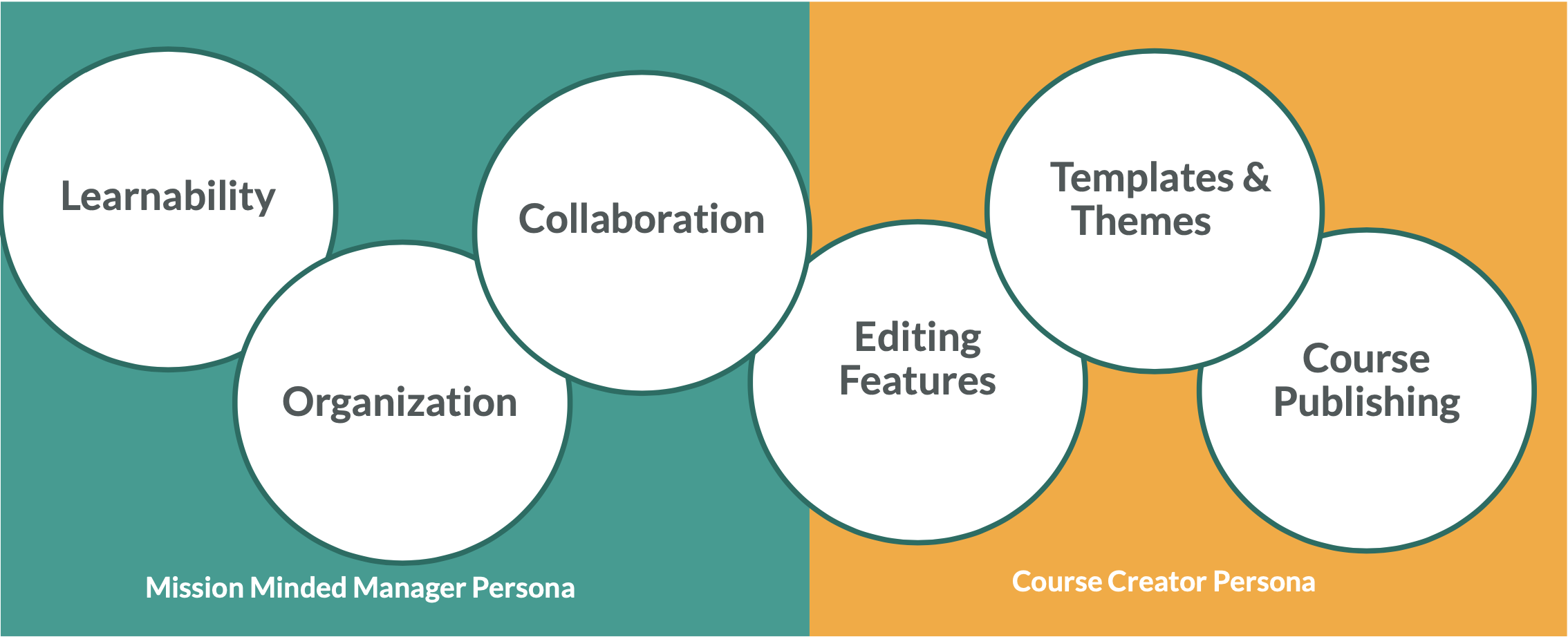Identifying user needs for a course authoring tool: Forge
Background
Forge is EVERFI’s low-code internal course authoring tool. Forge is used on a daily basis by a small team of implementation specialists to maintain the functionality of digital course experiences that are used by millions of our learners.
Before the Forge product was created, front-end developers built our courses in a traditional development environment. Forge was designed to provide a GUI for non-developers to be able to build courses with drag-and-drop editing features, similar to common web or course builders (e.g. Squarespace, Wix, Articulate) in order to reduce the overall amount of time and effort to build, deploy, review, test, and release course content.
Problems to solve
At the time of this project, Forge implementation specialists were encountering a lot of pain points in their daily workflows. Forge was originally developed by a team of engineers with little UX and design involvement, therefore the UI was rather technical and still required users to hold a decent knowledge of front-end development in order to fully develop a course.
I collaborated with another UX researcher and designer and the technical product manager to re-align the product vision and roadmap with the needs of our implementation specialists.
Research and discovery
Secondary research
We first researched the competitive landscape of similar course authoring tools such as Articulate Storyline and Rise, Smart Sparrow, Gomo, and Elucidat. We identified and compared the range of features in these tools such as simple vs. advanced course creation, custom vs. templated interaction development, and simple vs. in-depth UI. This provided us with a foundational understanding of the scope of the product we were working with, helped guide the development of our interview guide for our primary research, and also serve as a guidepost for our future design recommendations.
Primary research
Then, we set out to better understand Forge end users and their needs and requirements for building a digital course experience. Research objectives included understanding:
goals when building a course/web content
system needs to complete goals
common problems and pain points
expectations of a course authoring tool when building a course/web content
Insights
We interviewed 12 people, who were a mix of both internal and external participants who held roles such as instructional designer, implementation specialist, or web content developer who had experience using content authoring tools as a part of their job.
After synthesizing our research insights, several themes emerged around learnability, organization, collaboration, editing features, templates & themes, and course publishing. Rooted in these six themes and direct anecdotes from our interviews, we delivered two personas and a journey map highlighting core needs of Forge end users to be used by the technical product manager to support product strategy and planning.
Mission-minded manager
This persona uses content authoring tools to support their team of instructional designers or implementation specialists. Managers stressed the importance of:
tools that are easy to learn
shared file organization
built in collaboration features such as commenting and reviewing
Course creator
This persona uses content authoring tools to create courses. Course creators emphasized their need of:
editing features that are easy to use such as click to edit and drag and drop
templates and themes to simplify daily task flows
a simple process to publish courses to their learning management system(s)
Outcomes
These research findings served as a foundation for stakeholder discussions about the redirection of the product strategy and growth of the Forge product. The key insights included in the user-centered artifacts led to development of wireframes and prototypes for new design features that would align the product design with the product goals of reducing the amount of technical expertise and time required to build and release course content.
